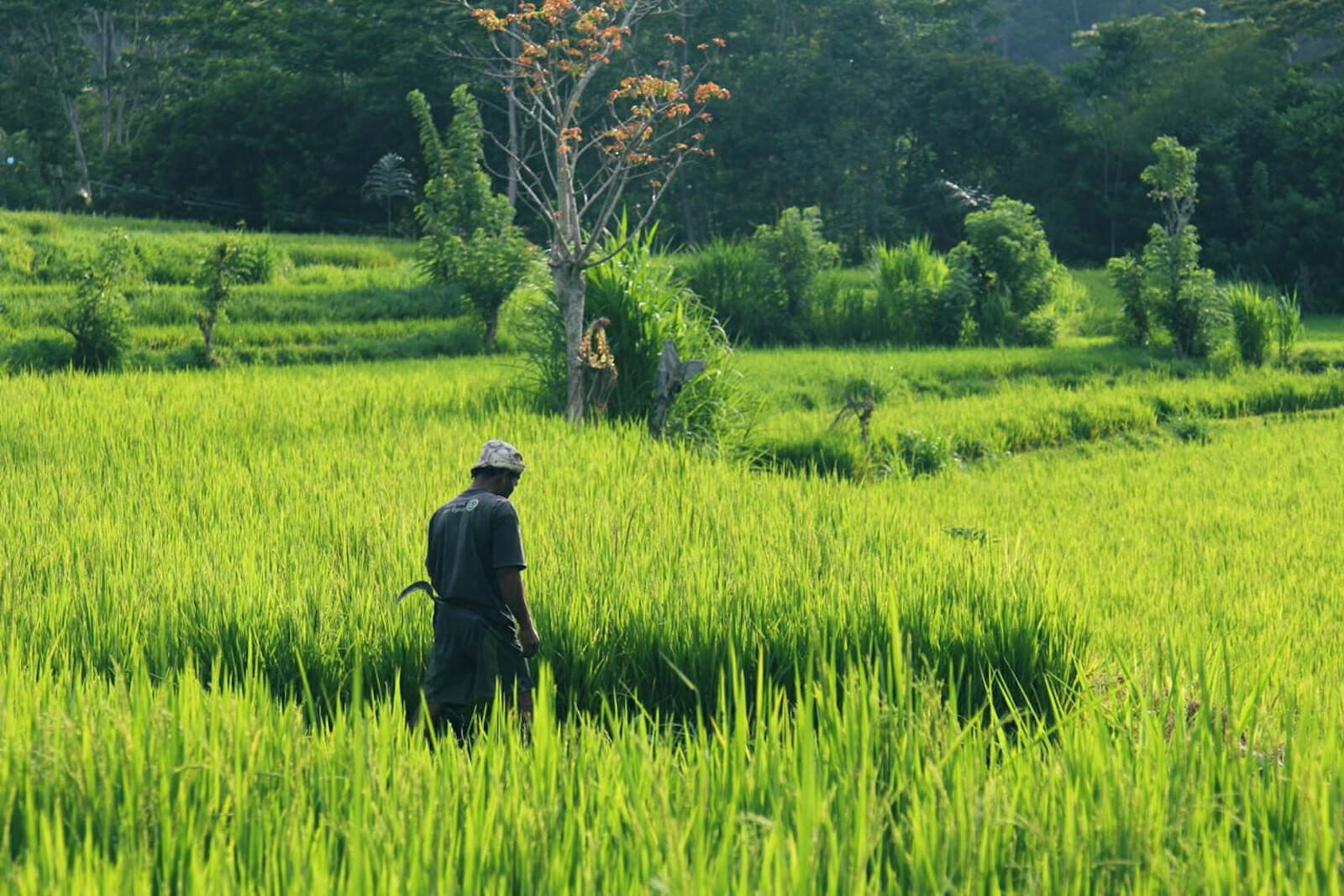
Corruption, Porous Borders Ducking Nigeria’s Rice Sufficiency Drive
Rice is a big deal in Nigeria. Almost everyone eats it. With an annual consumption rate at 6.4 million tonnes as of 2017 and an increase of 4.7% in the last decade, the country accounts for about 20% of Africa’s total consumption. But meeting the growing demand through local production has proven to be a huge problem for the country. In recent decades, Nigeria has increasingly relied on importation to meet this demand.
The general election in 2015 ushered in a new federal government led by Muhammadu Buhari. After assuming office he announced his intention to invest in agriculture, making Nigeria self-sufficient in rice production and reduce unemployment and place a 70% import tariff on rice.
To drive this home, new intervention programmes were birthed. Chief among them is the Anchor Borrowers Programme. This initiative was hailed as the most comprehensive government-driven agro-initiative in Nigeria’s history. Speaking at its launch on November 2015, Buhari reiterated his commitment to diversifying the economy. “The programme has been designed as a one-stop-solution for agricultural value chain by creating economic linkages between farmers and processors to not only ensure a clear agricultural output but to also reduce dependence on imported food.”
The other programmes include the International Fund for Agricultural Development, to make funding worth $15 million available for farmers, the World Bank’s Fadama programme, as well as the UN Development Programme partnership worth $8.06 million.
Before the introduction of the Anchor Borrowers Programme, $2.41 billion was spent to import rice between January 2012 and May 2015. According to a BBC report quoting Audu Innocent Ogbeh, Nigeria’s former Minister of Agriculture, the country spent $5 million a day on rice importation to bring in 2.3 million tonnes of the grain in 2016.
Corruption Fraught Intervention
The launch of the Anchor Borrowers Programme came with lots of fanfare and hype. Designed by the Central Bank of Nigeria (CBN), it targeted smallholder farmers with a special focus on rice farmers. The programme was designed to make loans available to them at an interest rate of 9% and has, as of May this year, disbursed about $527.6 million to farmers across the country. However, fast forward to about four years after the launch, allegations of corruption and discrimination have bedeviled it while reliance on rice imports is still high.
In the northern part of the country, where there are many of the beneficiaries, it was alleged that politicians high jacked the programme to compensate their followers and practically shut out local farmers. Some farmers saw the loan as their own share of the national cake. A sort of personal reward for voting for President Muhammadu Buhari and hence their refusal to service the loan.
While in the south, there were allegations that the programme was designed primarily with northerners in mind. Some beneficiaries could not get the funds even after meeting the set criteria. But CBN debunked the allegation. The bank attributed the poor implementation to the inability of farmers to meet several conditions.
Adaku Ezeibe, a lecturer at the University of Nigeria, attributed the failure of the programme to lack of awareness of the availability of locally grown rice and the nutritional edge it has over foreign grown rice. “Most Nigerians do not know that our rice is more nutritious than imported rice. They also don’t know that the more we buy foreign rice, the more we kill our economy. We can’t keep patronizing foreign farmers to the detriment of our economy.”
But local production cannot match demand. Hence the gap is being plugged by imports. This gap is driving the high patronage foreign grown rice is enjoying. However, she advised that campaigns should be embarked upon by the central government to “create awareness for Nigerians to patronize our rice and the farmers would be encouraged to improve and produce more. This would go a long way to bridge the gap you talked about and help our economy.”
Dashed Hope
When Evelyn Agon learned of the Fadama programme from her fellow farmers “during a chat” at a local market, she had high hopes. Chief of which were hopes of expanding her small rice farm located in southeast Nigeria. But like the hazy dust of the dry farming season flutters with the wind, her hopes fizzled when she discovered the programme was not as great as her friend had told her at the market.
Evelyn is one of the beneficiaries of the Fadama III programme – the third phase of the programme launched in 1993 by the World Bank and run in partnership with Nigeria’s Ministry of Agriculture to make about $200 million available for farmers along the agro value chain.
“My friend told me at the market that the government was coming to our village to assist those of us that are serious with our farms, especially rice farm. I was happy. I believed it would make me expand my farm and take care of my children. I needed fertilizer, seedlings, chemicals, and guidance. We were told we would get them when we went to Enugu (capital of Enugu state) to see the officials.”
Evelyn explained that she, alongside other women from her community, spent the little money they had on transportation to the capital, more than 30 kilometres from their village for training, but they ended up being told about the old practices they knew without any other assistance. Her experience resonates with the thoughts of other beneficiaries who complained of the slow takeoff.
However, the programme team leader, Adetunji Oredipe, described it as a huge success. “The project had contributed to the agricultural transformation and development in Nigeria in terms of gross domestic product (GDP), food security, youth and women employment and rural development and World Bank is happy for this.”
Smugglers on a rampage
The government had hoped that the programmes were working optimally, hence the claim by President Buhari that the country has cut rice importation by 90%. Vice President Yemi Osinbajo, during the build-up to the 2019 general elections, made a similar claim. In the same vein, Audu Innocent Ogbeh, stated that Nigeria’s success at meeting her rice demands led to the collapse of 7 giant rice mills in Thailand, Nigeria’s major exporter of rice.
Statistics from the CBN, show real progress in import reduction and reinforces the claim of government officials. The Central Bank of Nigeria revealed that the country had imported only 5,587 metric tonnes between January and July 2018. This, however, is a sharp contrast to the figure released by the U.S. Department of Agriculture which stood at about 3 million tonnes during 2018.
On the flip-side, import of parboiled rice, which is mostly consumed in Benin, Nigeria’s neighbour, increased by about 100%, according to a report by the Global Alliance for Improved Nutrition.
Hence, government intervention only succeeded in stifling legal importation but encouraged smuggling. In the first quarter of 2019 alone, the Rice Processors Association of Nigeria decried that over 1 million metric tonnes – 20 million bags of 50kg of rice and about 29% of the USDA’s 3.4 million metric tonnes 2019 estimate for the country – was smuggled in. This is largely blamed on porous borders.
Meanwhile, the agency charged with the task of manning the borders, Nigeria Customs Service, seems inadequate. Hameed Ali, the head of the Customs Service, in turn, blamed it on the interconnectivity of Nigeria’s borders with adjoining nations and asked Nigerians to prevail on the smugglers to stop their “deadly activities.”
Then in a total clampdown a few days ago, many Nigerians woke up to the news of the closure of the country’s porous border with Benin which has served as a hub for smuggled goods, especially rice. Explaining why his government made the move, Buhari hinted that the decision was aimed to curb activities of smugglers.
“Now that our people in the rural areas are going back to their farms, and the country has saved huge sums of money which would otherwise have been expended on importing rice using our scarce foreign reserves, we cannot allow smuggling of the product at such alarming proportions to continue,” Buhari said in an address to the Tokyo International Conference on African Development in Yokohama, Japan.
Beyond the challenge of porous borders, Ikenna Ukwuaba, a public policy analyst and lecturer of Agricultural Economics at the University of Nigeria, thinks price is a major factor. “Nigeria has not been able to grow rice in the way and manner that would reduce the influx of foreign grown rice.”
“Foreign rice is cheaper than locally grown rice. Price is a major factor in the demand and supply of any commodity, and thus, Nigeria cannot effectively compete with other rice producers in the world. Most of the equipment used in rice processing is imported, and thus add to the cost of production, consequently putting Nigerian farmers in a disadvantaged position.”
Checks by this writer at Bodija and Dugbe markets located at the heart of Ibadan, in southwestern Nigeria, confirmed earlier reports that locally grown rice is more expensive than imported rice. One of the dealers revealed that she makes more profit selling imported rice than locally grown rice.
“The prices of the two are not the same. The foreign ones are cheaper and we make more profit by selling them than the local rice. Also, people buy the foreign more,” she said.

